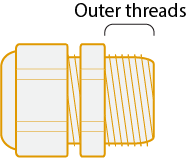STs Series Pipe Mounting Instructions
Our 3/4 inch Kynar® compression fitting (Part # cmp-k) is designed for long-term pipe mounting of pHionics STs Series™ sensors. Mounting instructions are provided below.
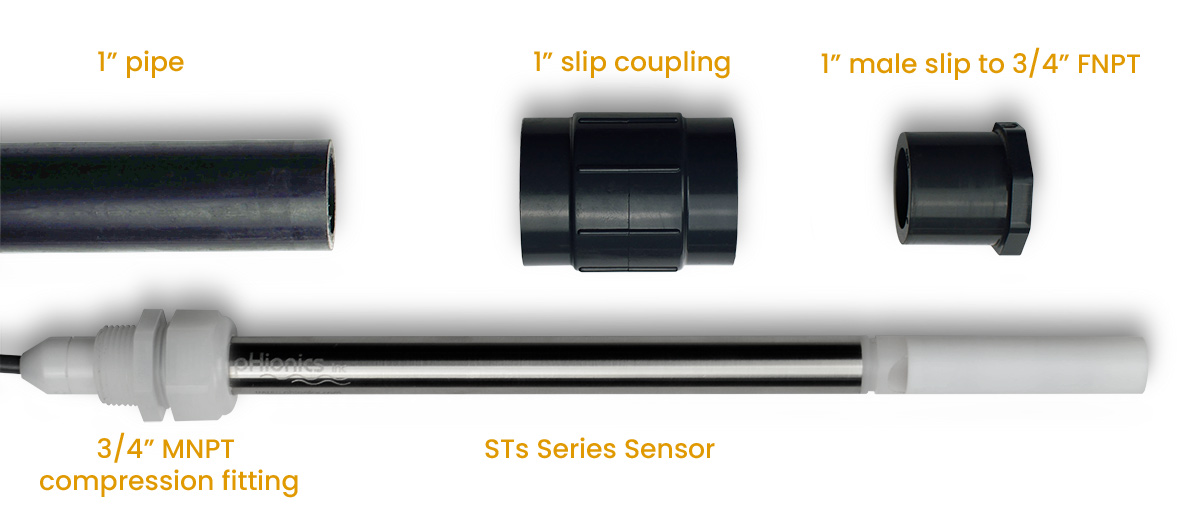
Required Supplies:
- Piping with 3/4″ FNPT adapters. Example parts shown in the image above.
- pHionics cmp-k compression fitting
- pHionics STs Series™ sensor
- Sealant (if waterproofing is required)
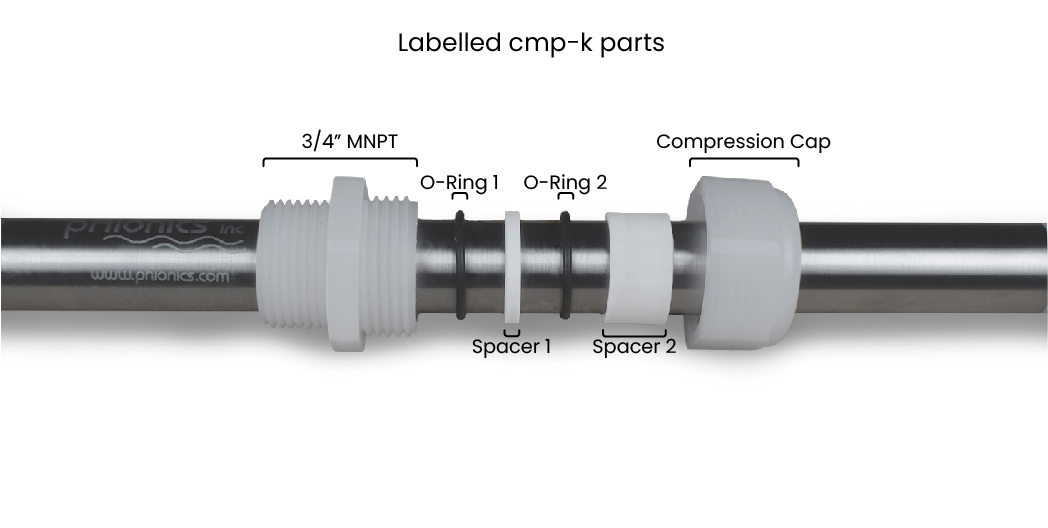
Instructions
1. Put sensor all the way through your pipe assembly.
2. Unscrew the compression cap until the entire fitting is loose enough to slide onto the sensor.
3. Slide fitting up sensor until it rests over the intersection between the cable connector and metal housing.
- This placement is necessary to expose sensor to the sample for accurate temperature compensation. The metal housing must also contact solution for noise reduction.

4. Twist compression fitting until it tightens on the sensor. No tools are needed to tighten sufficiently.
5. If waterproofing is required, add sealant around outer threads before screwing into pipe.
6. Screw compression fitting into the ¾” FNPT at the end of the pipe.
For any questions or feedback, please call or email pHionics support using the information provided on our Contact Page.
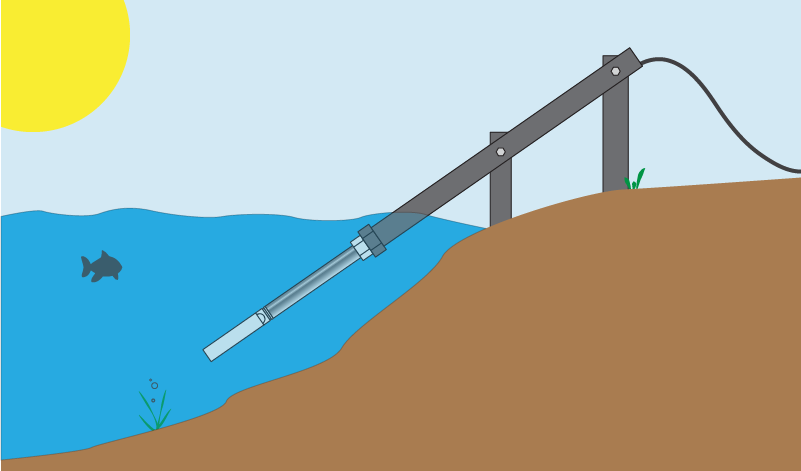
Images of using cmp-k compression fitting for pipe mounting. This method allows for permanent placement in a water source for reliable measurements.

Recent Articles
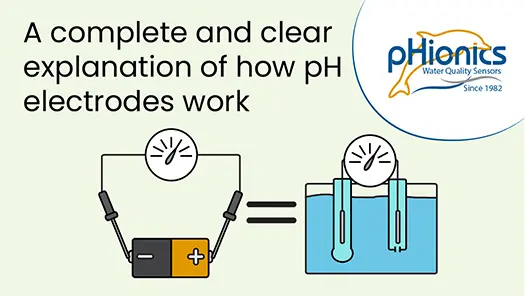
How Glass pH Electrodes Work
In this video, learn about the electrochemistry that allows silver/silver chloride pH electrodes to measure the acidity of solutions. Modern electrode design is also reviewed to demonstrate what improvements have been made and what weaknesses are still present. Click...
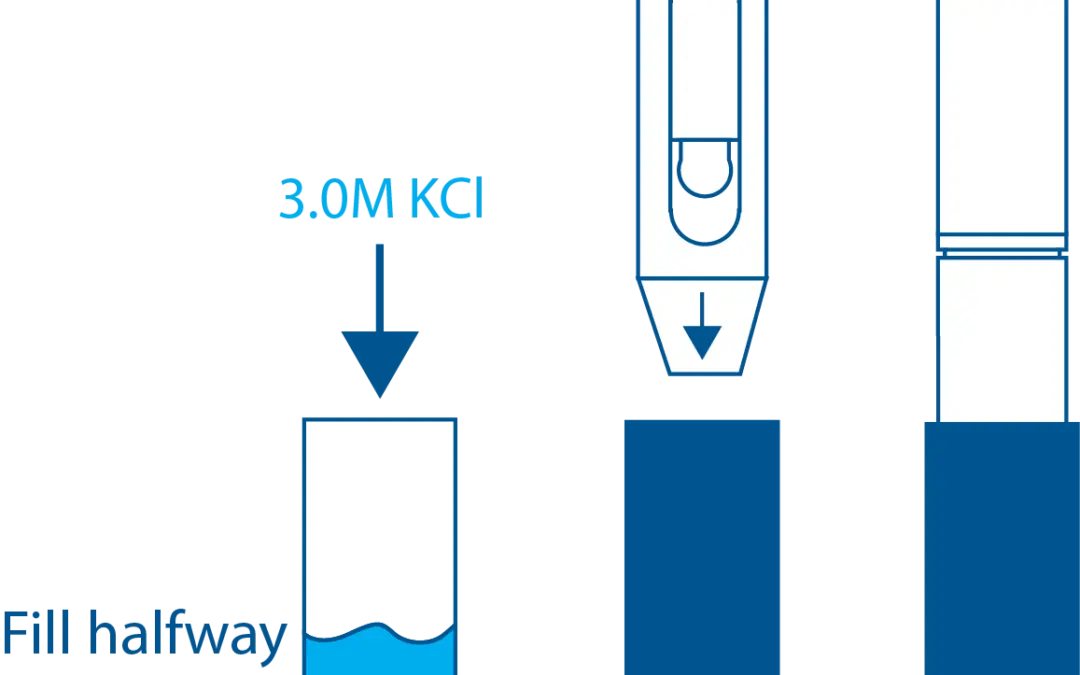
STs Series Sensor Storage
STs Series sensors are constructed from high-quality, durable materials that can be stored for long periods of time. The only weak point is the electrode, which can be damaged or expire during storage in the wrong conditions. These conditions vary depending on the type of electrode, which is why we have different storage instructions for each sensor.
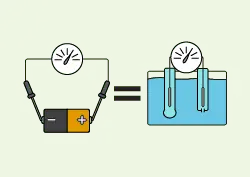
How a Glass pH Electrode Works
A comprehensive article covering how glass electrodes measure pH in a simple, understandable format. Specifically for silver/silver chloride electrodes.

